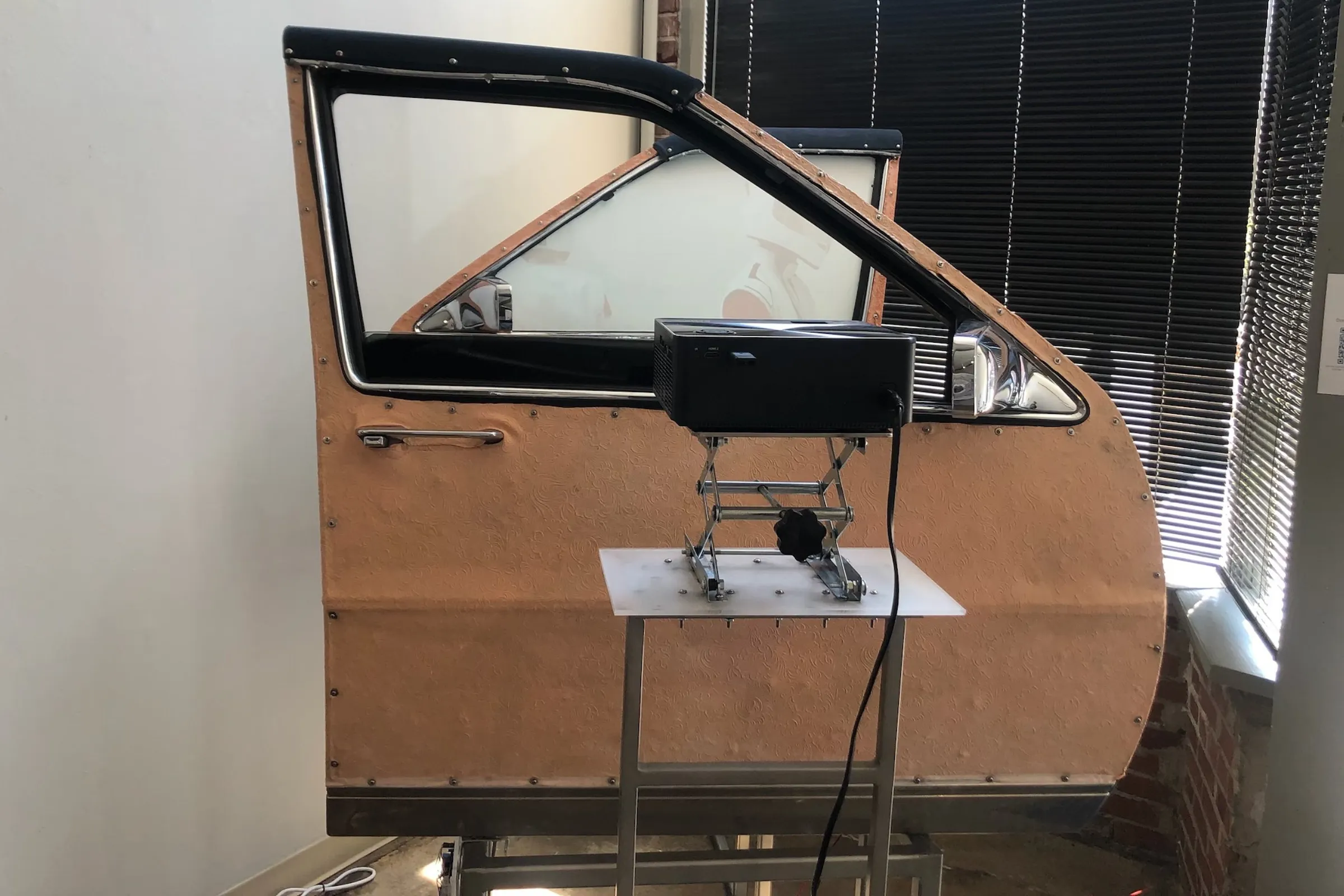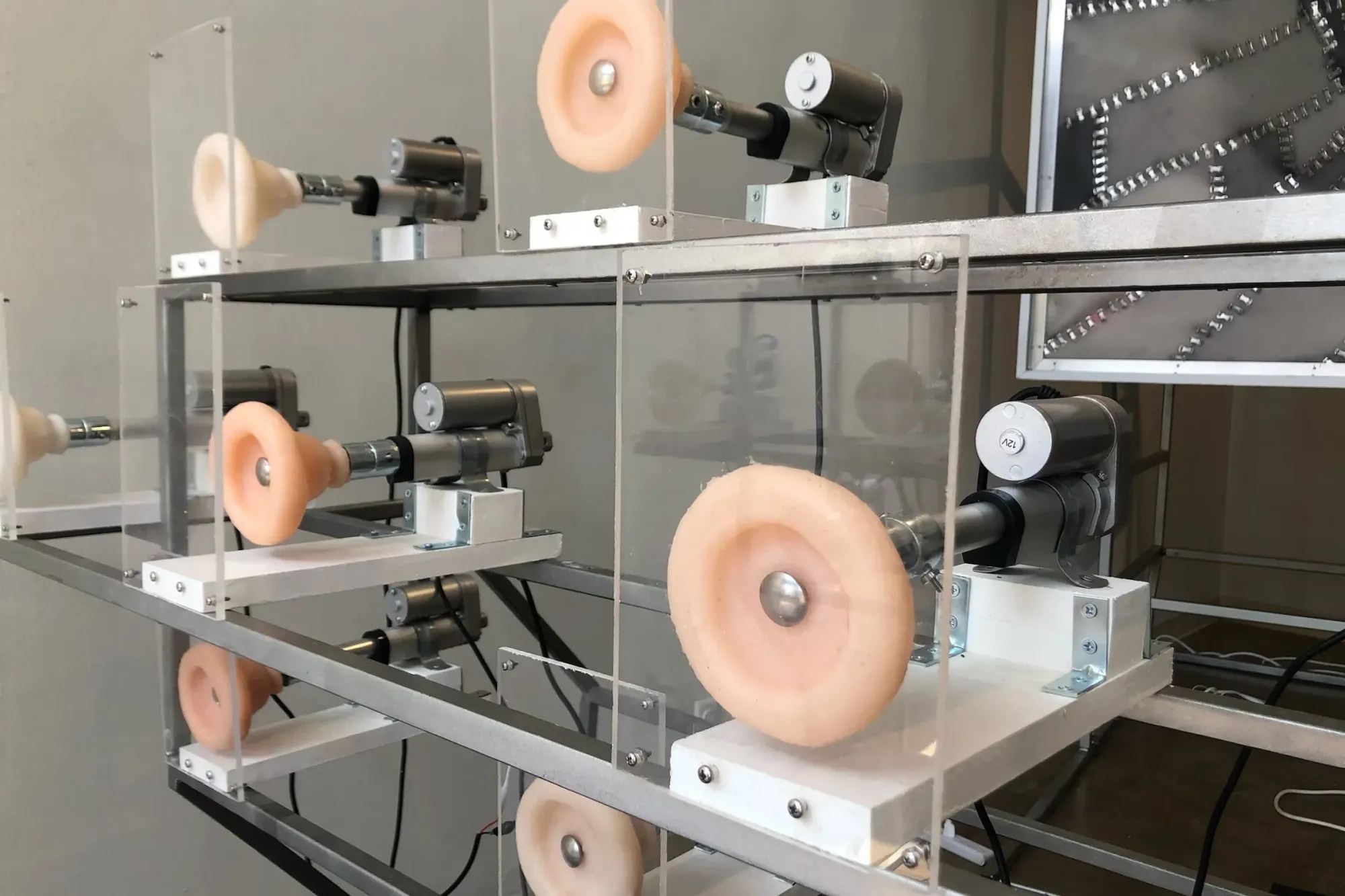Jordan Vinyard: Command + C, Command + C, Command + CTAC Gallery
Tulsa
Aug. 2 – 24, 2024
Kinetic sculpture — sculpture that moves — is a tough beast to tame. It tends to move slowly, and often strangely, and like its predecessor, the modern static sculpture, it leans towards subtlety. The current show up at TAC Gallery, Jordan Vinyard’s Command + C, Command + C, Command + C, forgets these facts. It pushes too much good work into too small a space, and doesn’t provide enough contextualization to allow Vinyard’s slow, thoughtful pieces to be felt.
My first issue stems not from the art, but with the respect given it. When I walked in during a slow midday moment, the person staffing the desk leaned out and said, “Yes, we’re open, and no, I don’t know what any of this is.” What a wildly dismissive thing to say as someone staffing a fine art gallery. Part of TAC’s mission is to support local artists, and yet one of its volunteers verbally sneered at the art the second a viewer walked in the door. I couldn’t help but think: What if I were the artist? Would the volunteer even know? The volunteer referred to the artist as “he,” which was my first tipoff that this particular person wasn’t trained on the work. (Vinyard teaches at the University of Science and Arts of Oklahoma and directs the Art Wrecker Gallery, both in Chickasha.) It’s disappointing. Difficult abstract art like this deserves to be lifted up, not quietly sniffed at. I hope that in the future the people staffing TAC Gallery know what the work is, and can at least talk about it without a sense of ironic scorn.
On to the work. The piece that greets one immediately is All The King’s Horses, a fantastically strange and large sculpture of silicone and bandage clips, slowly being moved by actuators. Behind two shifting holes play videos of horses: one shows a horse’s eye, the other a horse’s mouth. The piece feels distressing and intriguing all at once, not only for the abrupt and loud movement of the actuators but also for the close framing of the horse which is constantly being changed: there’s a sense of tunnel vision to it that stuck with me long after leaving the show.

On the left from the entry, Kissing Booth is a bench between two sets of pistons, pushing little silicone plungers (you could call them lips) onto slates of plexiglass. Sitting there, I felt this sense of aimless amorousness, as though a great army of faceless people suddenly, without reason or motive, wanted to kiss me. As a man, it’s easy to forget the sheer volume of desire that gets thrown at women; this piece forced me to remember.
The third piece is Hood Ornament, a set of car doors held up on steel girders. One window grinds up and down while the window behind it acts as a screen for a scene from (I think) Paul Bartel’s Death Race 2000 (1975). It repeats the phrase “Women are still worth ten points,” which is a reference to the idea in the movie that pedestrians are objects to be hit to gain points in a transcontinental car race. Vinyard not incorrectly accuses us of the idea that, for all the work they can do — all the beautiful art they may create — women are still objects to be counted, numbered, and killed.

Ultimately the show is worth seeing to experience the uncanny strangeness of Vinyard’s strong, sensitive work and be forced to think about it. A lack of explanatory placards in the space will force the inquisitive viewer onto TAC Gallery’s website, where the works are at least named. I wish I could have seen these powerful, interesting pieces in a larger space — and in one that attempted to understand, respect, and translate them.
Next from Z. B. Reeves: Charlotte Bumgarner at LowDown, August 16






